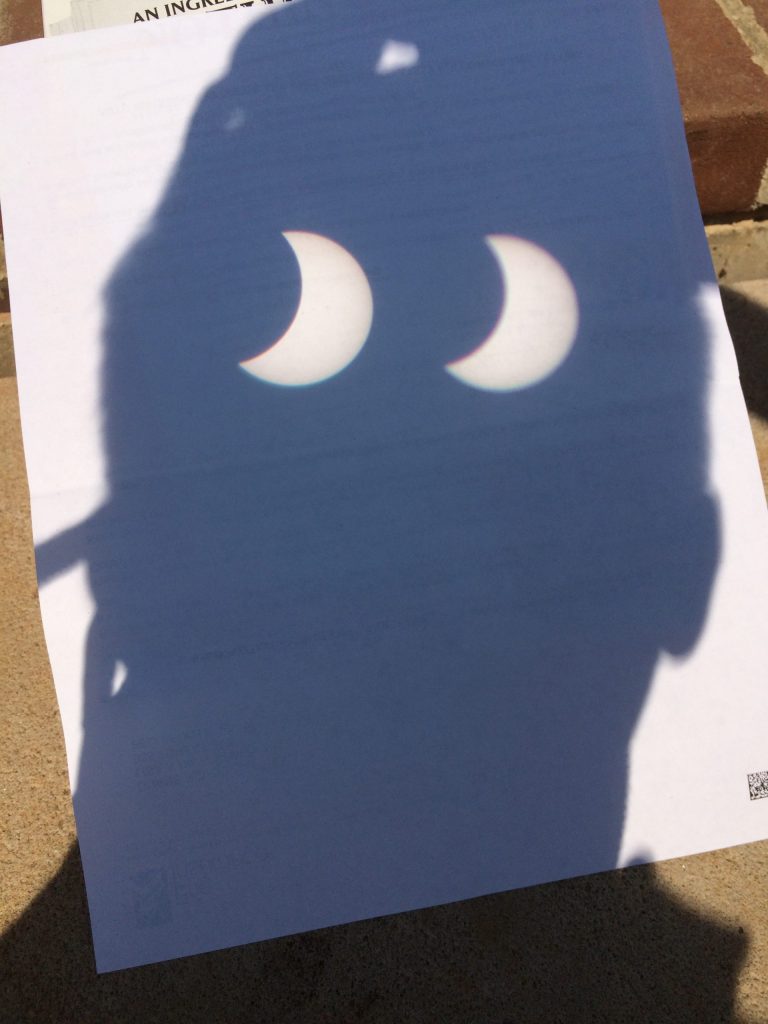On August 21, 2017, there was a total solar eclipse. The path of totality passed from coast to coast over the U.S. From start to finish, it took about 4 hours. But totality was only a brief 2 minutes and 40 seconds. However, from the photos and videos I’ve seen, it was completely AMAZING!
Here in Pennsylvania, if someone didn’t tell me there was going to be an eclipse, I would never have known. Sure I made my eclipse viewer from a cereal box and went outside between 14:30 and 14:45 to catch 80% of the sun obscured by the moon.
 Jeannine’s solar viewer
Jeannine’s solar viewer
But the sky did not darken. The sun still shown. And I was rather disappointed given all the hype.
So what of our deer? Were they disappointed too? Did they notice 80% of the sun blotted out of the sky in the middle of the afternoon?
The short answer is no.
We switched the GPS collars of 6 does and 6 bucks to capture locations every 15 minutes starting Sunday afternoon until Tuesday afternoon. Then we looked at distance moved for those 3 afternoons.
In the graphs below we plot distance traveled every 15 minutes from noon until 6pm for the day before in black (8/20/2017 – but most deer didn’t start collecting data until 4pm), the day of the eclipse in red (8/21/2017), and the day after in blue (8/22/2017).
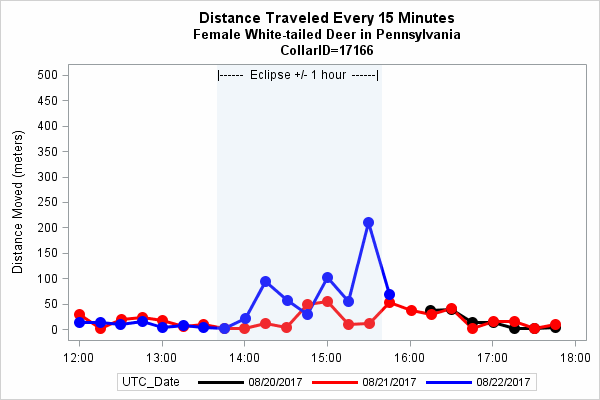
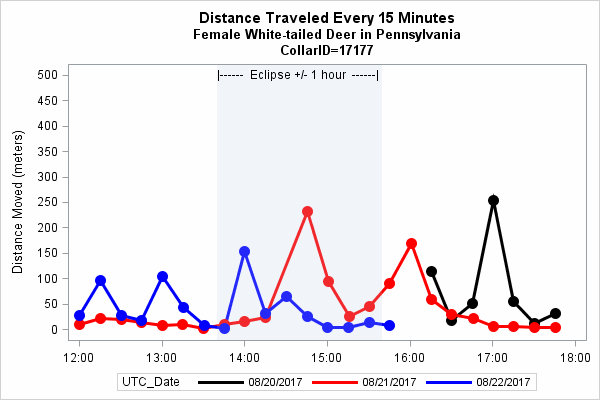
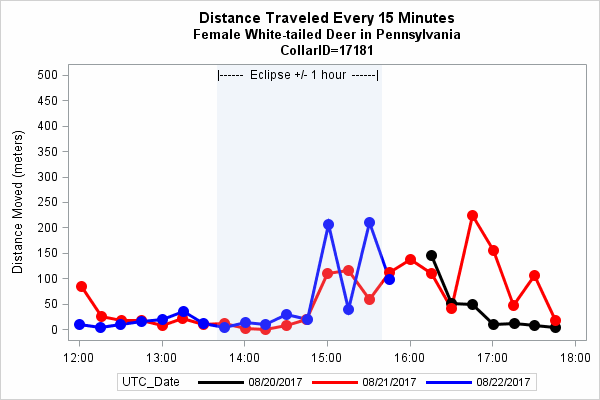

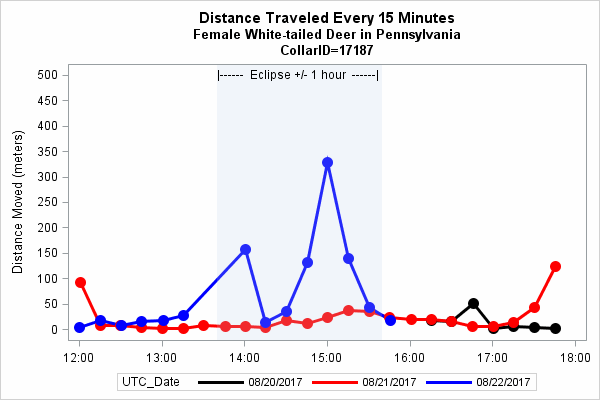
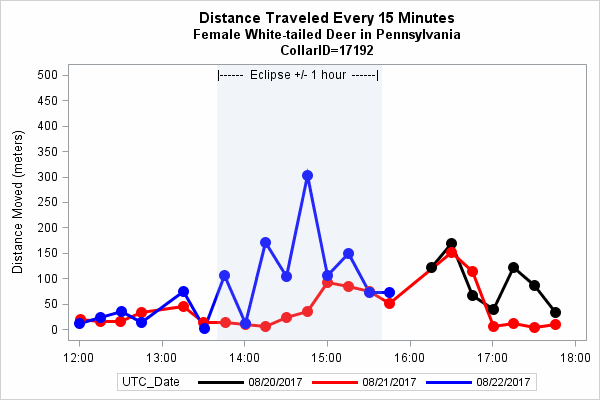
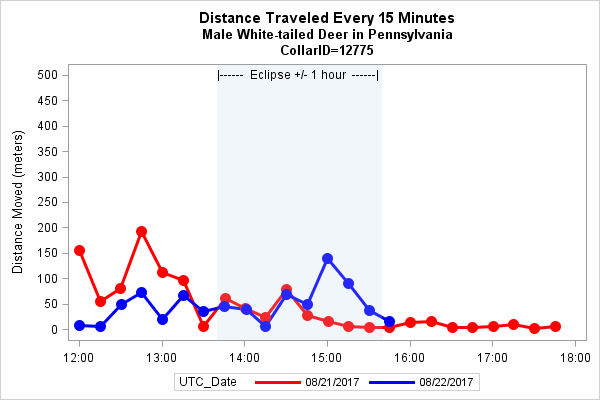
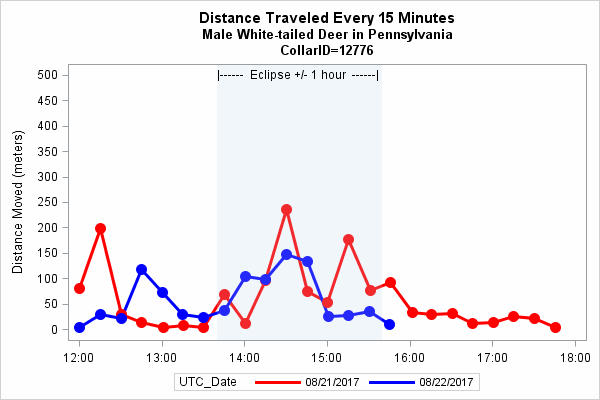
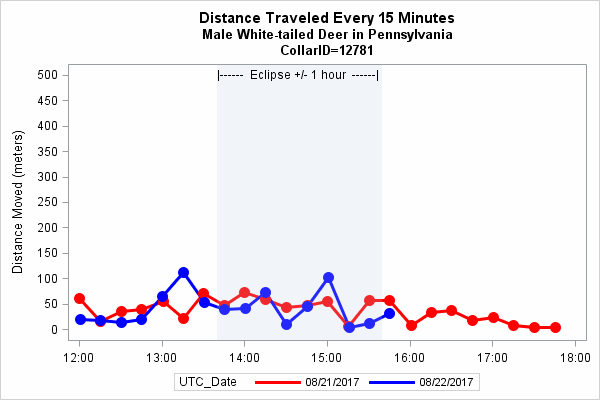
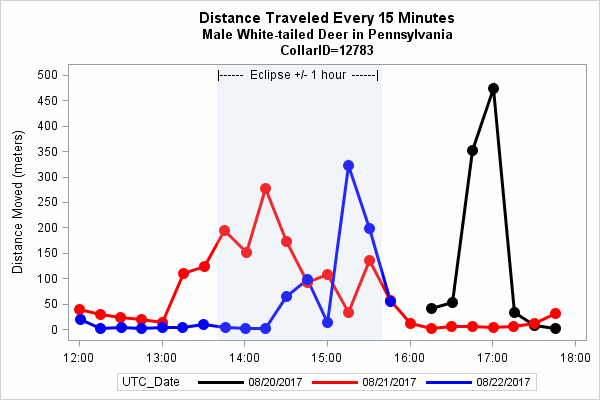
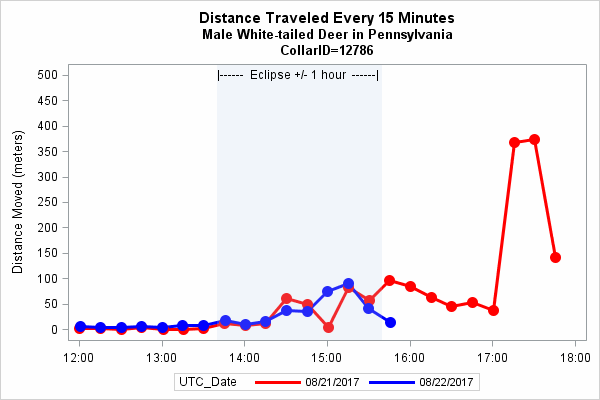
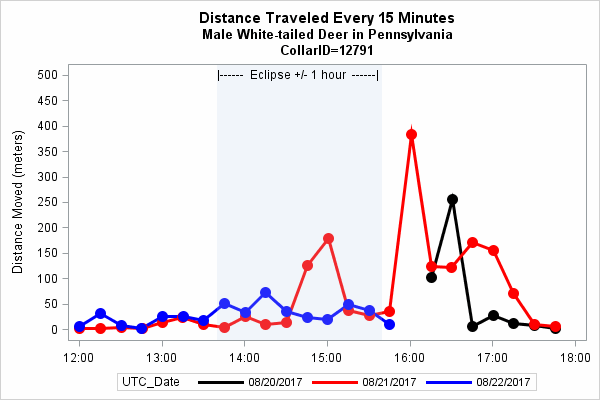
These graphs tell us nothing. Why? There is more going on in a deer’s world than just a solar eclipse. Right about the same time as the eclipse a batch of thunderstorms also moved through central Pennsylvania.
If you squint with one eye closed and tilt your head, you MAY see something in these graphs. But was it the solar eclipse or the torrential rain?
In the scientific world, we call this a confounding factor. A confounding factor (or variable) is a variable that was not controlled in a study. That is, we may have been interested in how deer responded to the eclipse, but our results are confounded by the fact that it rained at the same time!
Confounding factors can affect results by showing a false correlation between dependent and independent variables leading to incorrect conclusions. This is the inherent risk with observational data.
An observational study collects data in different circumstances over which the observer has no control.
Compare this to an experimental study, such as Danielle Begley-Miller’s vegetation experiment with liming, herbiciding, and excluding deer. In this type of study, researchers manipulate variables in order to determine how the manipulation influences other variables.
Good research design accounts for as many variables as possible. This is particularly challenging when it comes to wildlife. There are only so many things we can control or manipulate. That’s why it’s important to have large samples sizes and replication. So we can tease out those confounding factors.
Speaking of sample size, 12 deer is not a large sample to answer the question about deer movements and the eclipse. Adequate sample size is crucial to all research. The goal is to make inferences about a population. Larger sample sizes lead to increased precision when estimating unknown parameters. So even for observational data, increased sample size and replication over time can provide sufficient data and may provide useful insights into the subject being studied.
And let’s face it – while the eclipse was SUPER COOL, less than 3 minutes (of totality or 80% occlusion) is really barely enough time for a bathroom break. The deer were not notified of the eclipse (and associated retinal damage from staring at it) so they just went about their day as usual.
Perhaps in 6 years with 95% of the sun blocked by the man on the moon, the news hype will reach our forest dwellers. I just hope there are enough eclipse glasses to go around next time.
-Jeannine and Duane
If you would like to receive email alerts of new blog posts, subscribe here.
And Follow us on Twitter @WTDresearch
